🏇 Kindergarten: Pushed, Pulled, and Barely Holding Together
Lynn brought Spheros back into Kindergarten—this time, to tackle a science classic: push vs. pull. She wanted minimal guidance, no demos, no examples. If you show them one idea, they all copy it. This time, they had to figure it out from scratch.
Each group got a Sphero and a pile of supplies, then had to build a “chariot” for it to push or pull. That was the whole brief.
One group had it all figured out—or so they thought. Great teamwork, detailed plan, decorations and all. Their design hinged on a pipe cleaner hula hoop to guide the Sphero as it pulled their cart. It looked slick… until I asked if they’d actually measured the Sphero.
They hadn’t.
They grabbed one, placed it inside, and immediately burst out laughing. The Sphero was way too big. They’d thought of everything—except for the part where the robot actually fits.
The Sphero totally fits after the redesign.
Lynn’s whole classroom vibe makes room for experimentation and design moments like this. Contraption collapsed? Parts don’t fit? Great. That’s where the learning happens.
We were short on time. The class was supposed to have started building in the days before, which would’ve let us run full tests and troubleshooting. Instead, we squeezed in a few trial runs before Carlo and I had to head to the next classroom.
Still, even in just those first janky test rounds, you could see the spark. Kids were yelling across the room, cheering when a Sphero actually moved something. Learning in motion. Literally!
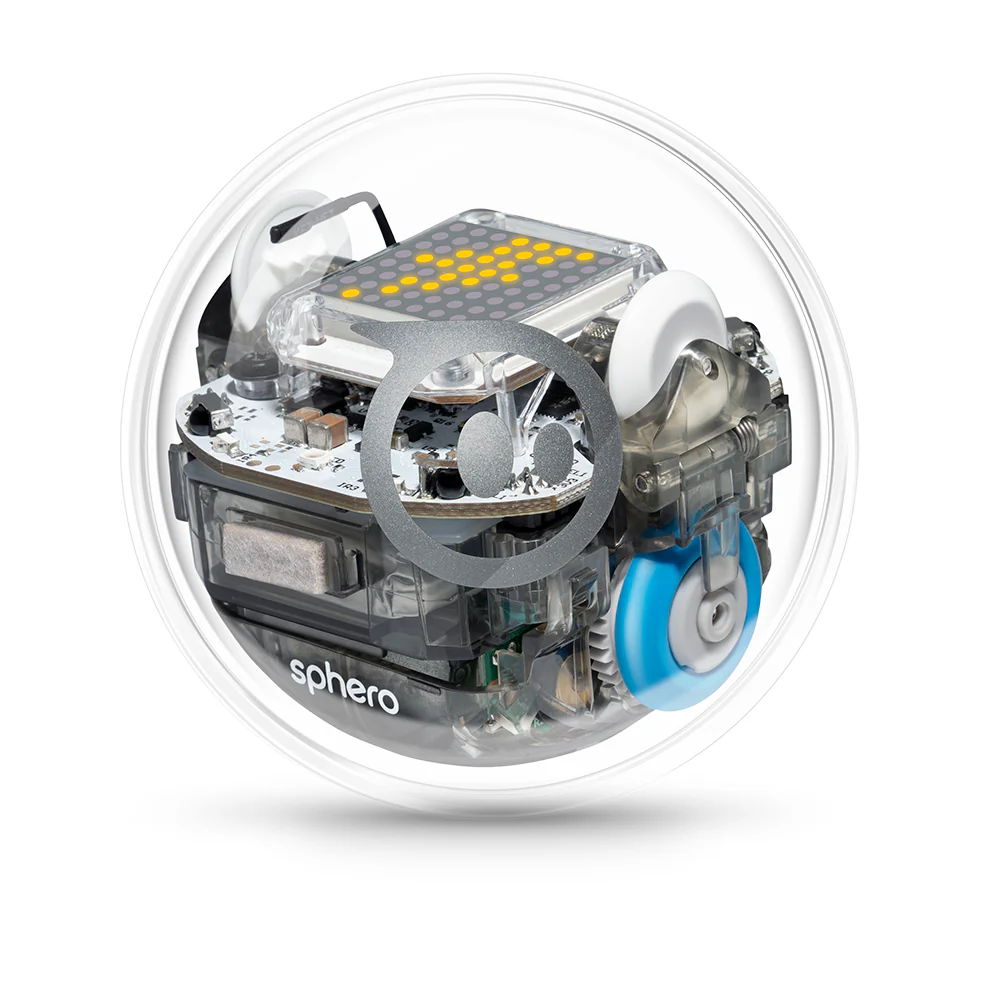
🤖 Grade 3: Bots, Shapes, and a Bit of Chaos
Libby’s Grade 3s are gearing up to use Botleys to draw shapes their partners can measure—geometry meets robotics. But before they start measuring perimeters, they needed to meet the robots.
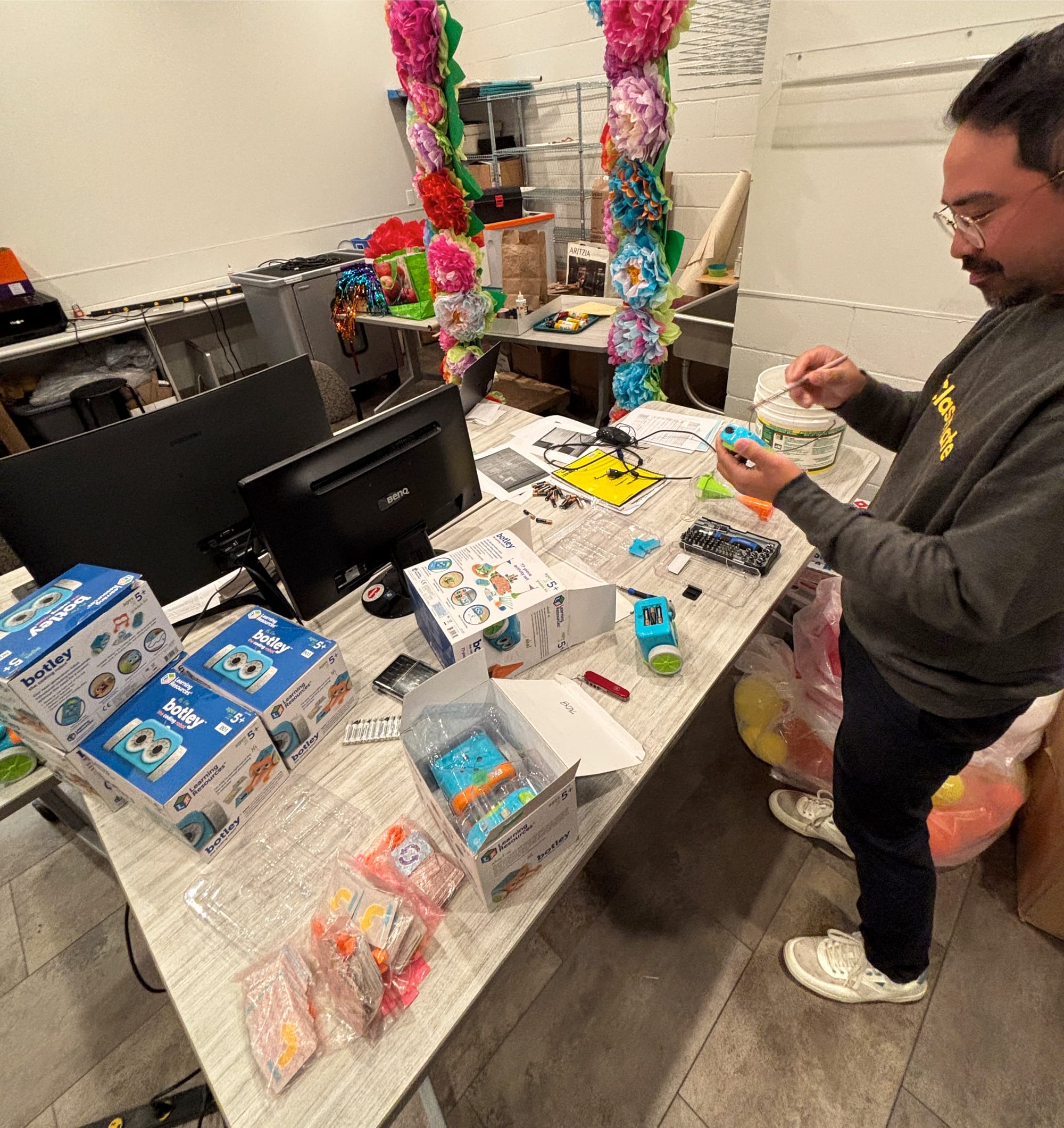
So today was Botley bootcamp. 🥾
We split the class into six groups, handed each a robot, and gave almost no instructions. The goal was simple: get to know the Botley. Build a maze. Make it do something. Try not to destroy it.
It went pretty well. Some groups immediately started building obstacle courses and challenging each other to get through them.
A few sharp-eyed students noticed that Botley moves about 30 cm with each forward action, which helped them fine-tune their course design. In one group, they measured an awkward 19 cm, and spent valuable time troubleshooting their maze runs to prevent Botley from going off track.
Others figured out that Botley has arms and can carry things around. If you’ve ever been to a hot pot restaurant these days, you’ve maybe been served by a robot bringing you food before. Botley was starting to look familiar… 🍲
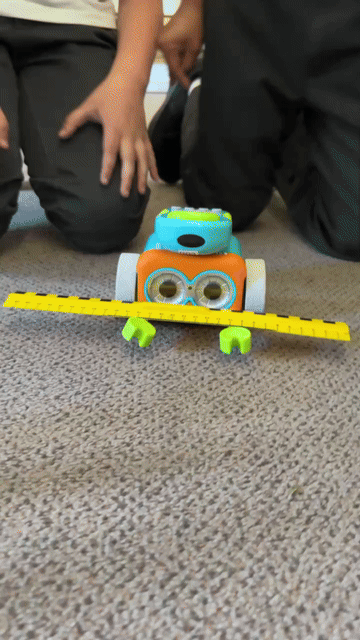

Serving rulers and designing obstacle courses!
There were hiccups—sharing wasn’t perfect, and collaboration broke down in a few groups. But that’s part of the test too. You learn a lot watching who grabs the remote and who just watches.
Libby is keeping the robots in her class so they can get more hands-on time before the next step. In a couple weeks, Carlo will come back to help with the full project rollout—drawing, measuring, calculating. But today was the prequel, and the robots survived. Win. 🏆
🛠️ Grade 7: Blueprints, Battles and Budget Debates
A few months back, one of the Grade 7s caught me in the hallway:
“Jen… can we do a robotics project again??”
I’d almost forgotten about the quick-and-dirty BattleBots project we ran at the end of last year. It was chaos—20 minutes to build, then straight to the arena.
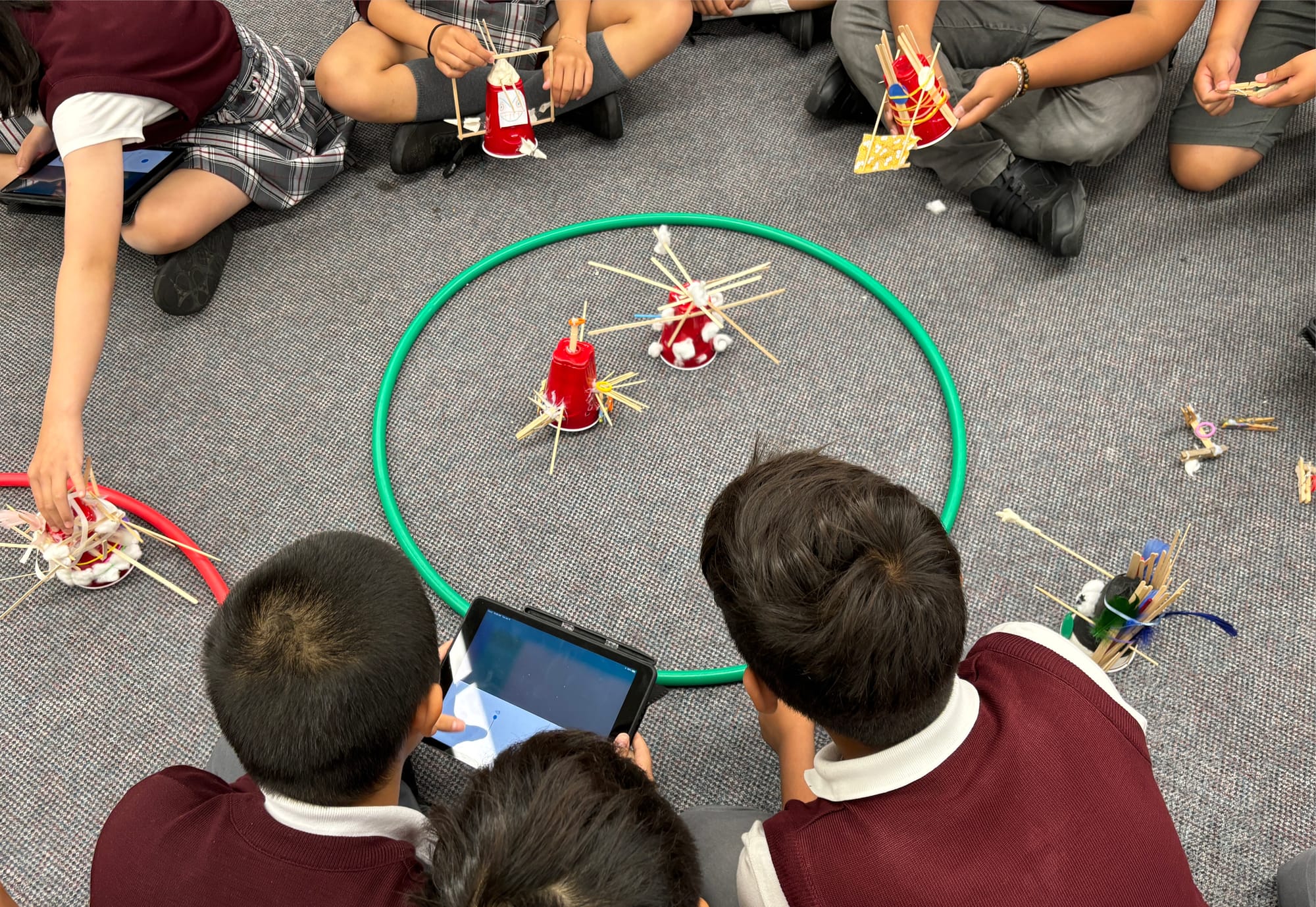
Our original Battlebots lessons.
This time, we’re doing it right.
I talked with Diane and we decided to expand it—more time, more structure, and a layer of financial literacy that I had dreamed about implementing last time. These bots are gonna be engineered and budgeted like real machines.
We kicked things off with the water bottle blueprinting lesson. Students sketched their bottles, labeled materials, called out features, and learned that “just draw it” won’t cut it when you’re explaining a design. Details matter.
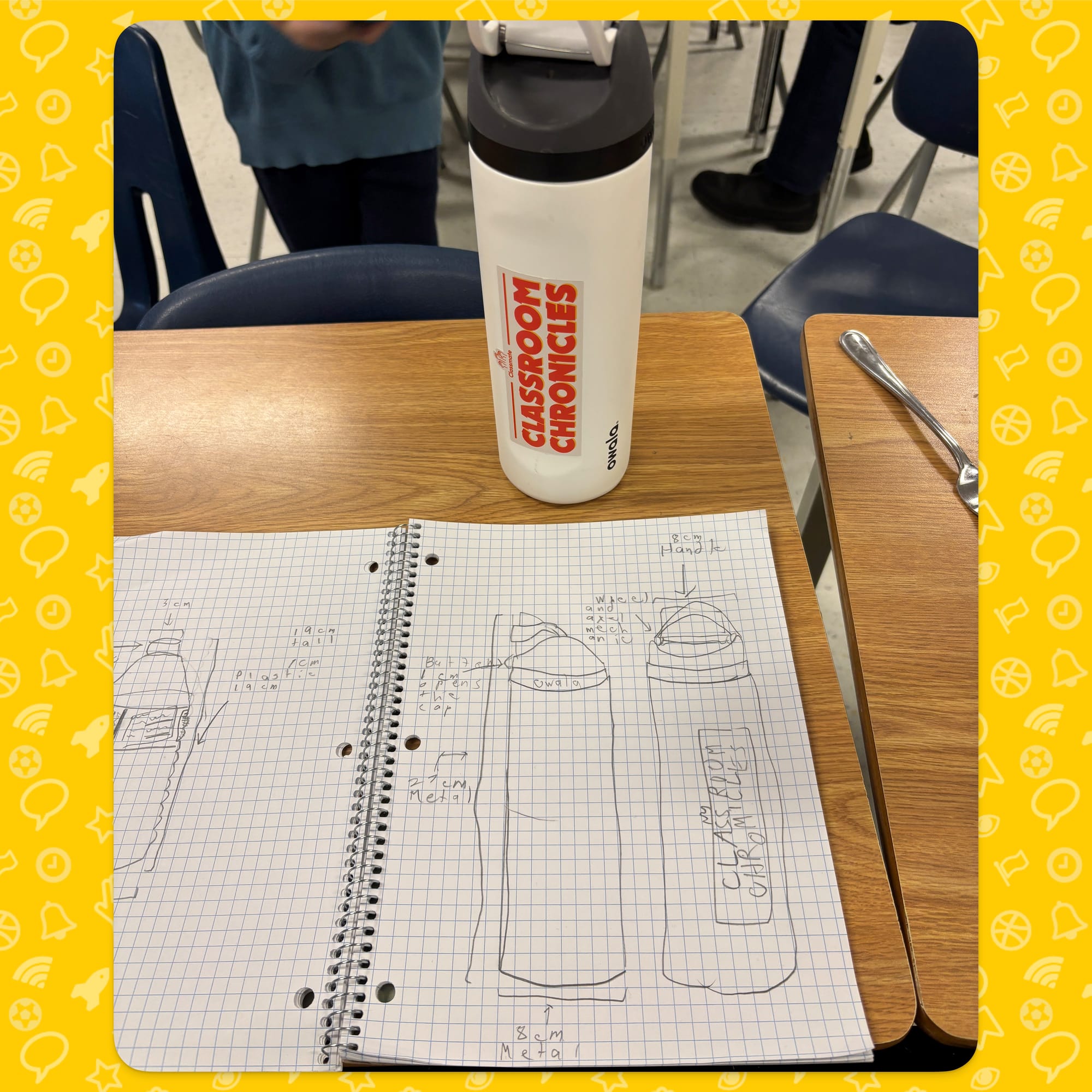
Then came the budgeting. I opened a spreadsheet and had the class shout out materials they might use: cardboard, tinfoil, popsicle sticks, string, tape. Then we priced them.
Cue immediate rebellion:
“That should be like… a dollar.”
“Masking tape is worse so it should be cheaper!”
Budgeting: where numbers get emotional.
The debate was the best part. They were negotiating, arguing, justifying—doing math with feelings! The point was sinking in: the cost of materials isn’t just a number, it’s a constraint.
Once the dust settled, they broke into pairs, armed with sketch pads and budgets, and started planning their bots. During their next few classes, they'll refine designs, gather materials, and then?
It's back to the arena! ⚔️
Robots Fail Too 🥴
Even the world's most advanced robot falls over.




